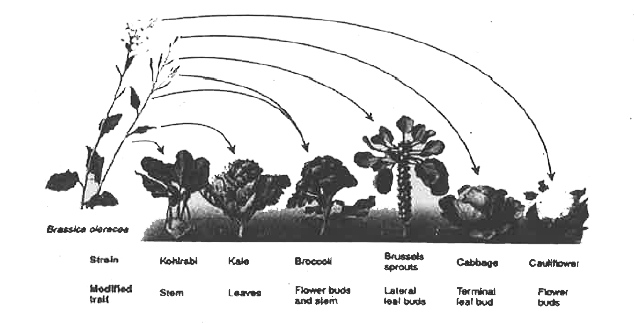What are fossils? What do they tell us about the process of evolution?Solution in Kannada
A fossil is evidence of an organism that lived long ago. These are remnants or impressions of the extinct organisms Which existed on earth millions of years ago. Fossils can be of following types:
a. Trace Fossils- These are indirect evidence of the dead organism. E.g footprint, trail etc.
b. Cast-: In rocks, the spaces are filled with dead organism making its replica or cast.
c. Moulds- organism buried in sediment and decayed leaving an impression.
d. Petrified Fossils minerals replacing the hard part of the organism
e. Frozen Fossils- Organism trapped in. ice or in tree sap which hardened later.
Fossils help us understand the process of evolution in following ways:
These are the clues to the past, trace the path of evolution
a. Help in building evolutionary relationships among the present organisms E.g. fossil evidence like Archaeopteryx and some characteristics of present-day birds like this hoatzin suggest that dinos·acrs might have been the ancestors of today.s birds
b. Fossils help us in learning diversity of life and animal behaviour in the past. This helps in understanding ancient environment ang climate and categorizing geological time scale.
Topper's Solved these Questions
- HEREDITY AND EVOLUTIONBOOK - SUBHASH PUBLICATIONCHAPTER - HEREDITY AND EVOLUTIONEXERCISE - HIGHER ORDER THINKING SKILLS
7 Videos
- HEREDITY AND EVOLUTIONBOOK - SUBHASH PUBLICATIONCHAPTER - HEREDITY AND EVOLUTIONEXERCISE - VALUE BASED QUESTIONS
3 Videos
- HEREDITY AND EVOLUTIONBOOK - SUBHASH PUBLICATIONCHAPTER - HEREDITY AND EVOLUTIONEXERCISE - SHORT QUESTIONS
14 Videos
- CONTROL AND COORDIANTION BOOK - SUBHASH PUBLICATIONCHAPTER - CONTROL AND COORDIANTION EXERCISE - VALUE BASED QUESTION
5 Videos
- HOW DO ORGANISMS REPRODUCE ?BOOK - SUBHASH PUBLICATIONCHAPTER - HOW DO ORGANISMS REPRODUCE ?EXERCISE - VALUE BASED QUESTION
3 Videos
Similar Questions
Chromosomes can be identified easily during metaphase. How ?
View SolutionStudy the picture below 'variation under domestication of wild cabbage plant and describe.

View SolutionDefine Natural Selection
View SolutionLabel the parts (a), (b), (c) and (d) and show the direction of flow of electrical signals in the following figure.

View SolutionIt is advisable to use only disposable syrings.Elaborate.
View Solutionजीवाश्म क्या है? यह जैव-विकास प्रक्रम के विषय में क्या दर्शाता है?
View SolutionWhat is the tell us the direction on the process.
View SolutionWhat do fossil fuels provide us?
View Solutionపురాతన జీవుల సమాచారం మనకు తెలుపుటకు ప్రకృతి భద్రపరిచిన విలువైన ఆధారాలూ శిలాజాలు శిలాజాల గూర్చి సేకరించిన సమాచారం తెలుపుము?
View SolutionImprints of fossils tell us about evolution- How ?
View SolutionWhat is a fossil? What do they tell us about the process of life evolution?
View SolutionWhat is a fossil ? Discuss the importance of fossils in the study of evolution.
View SolutionWhat are fossils? How are they formed? Describe in brief two methods of determining the age of fossils. State any one role of fossils in the study of the process of evolution.
View SolutionWhat are fossils ? What do they tell us about the process of evolution.
View SolutionWhat do the following terms mean?
(i) Micro-evolution,
(ii) Fossils.
View SolutionWhat are fossils? What is the importance of fossils in organic evolution?
View Solution